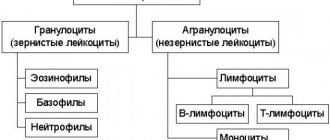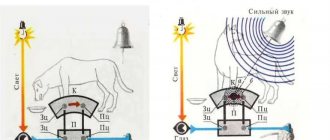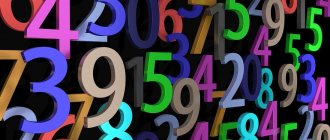Such a question would hardly have occurred to a Soviet person. Isn't that what school is for? Until the child goes to school, let him enjoy freedom and carelessness - why take away his childhood?
However, the reality is that today you need to come to school already prepared. Why is it important:
- it will be easier for the child to adapt to the educational process;
- it is easier to understand the teacher and complete assigned tasks;
- the child will not lose interest in learning, because he will definitely not fall behind.
The 21st century is the century of early childhood development. It will be difficult for an unprepared child to join a team where other children are already fluent in reading, writing, and even solving simple mathematical problems. This will definitely not add optimism to your child and the desire to gnaw on the granite of science.
Therefore, preparing a child for school is the direct responsibility of every parent. Is it necessary to teach a child calligraphic writing before school, when to start doing it and what skills should a preschooler develop - you will find the answers to these questions in our material.
How to teach a child to write numbers correctly?
The main task of a parent of a preschooler is to awaken interest in new knowledge and skills. Therefore, lessons are conducted exclusively in a playful, relaxed manner. Learning numbers and honing writing occurs in stages:
- At 3–4 years old, a child becomes familiar with numbers and learns to understand their meaning. The numbers are sculpted from plasticine, made from sticks, laces, and buttons. Another important aspect of preparation is the development of fine motor skills and spatial orientation (top-bottom, right-left).
- At 4–5 years old, it’s time to get acquainted with a checkered notebook. The child is shown where numbers and letters are written from left to right and top to bottom. He learns to navigate the cage and trains to make small movements. At this age, they draw elements of numbers and letters: straight and inclined lines, circles, semicircles, etc. To maintain the baby’s interest, the tasks are gradually made more difficult. For example, they are asked to draw a house, a flower, a star (by dots or by cells).
- At 5–7 years old , with proper preparation, the child is completely ready to master spelling numbers. He should be told about the slope and indicate that the numbers should not go beyond the boundaries of the cell. Next, the child first traces the number with his finger along the arrows (enlarged version) to understand the direction of the lines, then connects the number by dots. And finally, he writes the numbers himself in the empty cell.
For the first lessons, it is useful to print out an enlarged version of the cells. This way the child will be able to better see how numbers are written. A large cage makes it much easier to navigate and accommodate a number. But you should not use such printouts for too long, otherwise returning to the standard cage will be too unusual and difficult for the baby.
Exercises to develop fine motor skills
A printable digital pattern to trace is a good fine motor activity. But at two or three years old it is still too early to give a child prescriptions. You need to start with simple applique classes, modeling from plasticine or salt dough.
You can make it yourself or buy sensory boxes in toy stores with bulk materials, animal figures made of plastic or rubber, and pebbles of different shapes and sizes. Constructing various scenes from game elements will contribute to the development of fine motor skills in a child’s hands from one year onwards.
With an older child, you can practice stringing beads on a string. Large buttons, plastic bottle caps, and wooden spools of thread can serve as beads.
You need to do finger exercises with your baby, telling funny poems about the magpie-crow who cooked porridge and fed the children, about bunnies and squirrels, about boys and girls.
You can create a shadow theater with your hands, fold origami, weave macrame, make figures and bracelets from rubber bands, cut out New Year's snowflakes, weave figures from large beads. Assembling a small construction set also perfectly develops fine motor skills of the fingers, but try not to give small parts to children under three years old so that they do not accidentally swallow them.
It is important to teach your child how to hold a pencil and pen correctly. It will take a long time to practice so that the pencil lies on the middle finger of the hand, being held between the thumb and forefinger. Do not scold your child if he holds the pencil incorrectly when coloring pictures. Explain that if he wants to learn to draw and write, he needs to hold a pencil, just like mom or dad does. Praise your child for his efforts and the slightest successes, trying not to notice mistakes and mistakes.
What to look for?
It is important not only to prepare for writing numbers in words step by step, but also to follow the general rules for teaching preschoolers:
- Lesson duration is 15–20 minutes. Children's fingers get tired very quickly, and they are not yet able to concentrate on a task for a long time. You need to learn to write numbers in words slowly, a little at a time.
- Understanding numbers. The child must clearly understand that a number is not a drawing, not a squiggle on paper. There is a certain meaning behind it (1 is one apple, and 7 is seven apples, which is several times more). For better understanding, it is recommended to simultaneously learn mental counting within 10.
- The right motivation. A common mistake parents make is to motivate their child to indulge in candy, a new toy, or a cartoon. This looks like compensation for something unpleasant. On the contrary, we need to talk about the benefits of knowledge, how good it is to be smart, to be able to write numbers, to study and learn something new.
- Lesson atmosphere and praise. New material must be presented in a friendly and interesting manner. It is useful to use visual, colorful examples and draw analogies. If a child makes a mistake, it is important not to scold him, but to praise him, focusing on the numbers that he was able to write correctly. You can draw a smiley face, a crown, a flower over them.
To write numbers in words, the child must hold the pen correctly - between the index, middle and thumb. Sometimes, for the desired effect, it is enough to press the napkin to your palm with your ring finger and little finger. You can read more about hand placement for writing here.
What copybooks should I use?
To teach a child to spell, it is very convenient to use printed material. Special copybooks can be printed out yourself or purchased from the office department. It is important to take into account that they come in several types and are designed for different ages.
At 3–4 years old, it is better to use coloring books with funny numbers. For example, these:
At 4–5 years old, the following recipes with figures are recommended for hand training:
It is also useful to print out the uppercase numbers from 1 to 10 and move your finger along them in the right direction:
For children 5–7 years old, it is recommended to use copybooks that contain an example of writing a number, its dotted outline that needs to be circled, as well as space for independent writing. It would be great if the recipes included additional exercises for training your hand and learning to count. An example of good copybooks for preschoolers:
Correct spelling of numbers
By analogy with letters: before you start writing numbers, you should learn them. It will be enough to know the numbers from 0 to 10. Next, we return to the principle “from simple to complex.” We begin parsing a number by decomposing the symbol into elements and working on each of them. First in the air, then in an album, then in a notebook or copybook.
When choosing copybooks with numbers, pay attention to their structure:
- at the beginning of the line, the number is written in bold so that the child can focus on it;
- followed by several dotted numbers for training;
- and only then empty space for self-filling.
A useful element in the copybooks will be an image of the algorithm for writing each number - in the form of arrows indicating the sequence of actions.
When writing numbers, it is important to respect the boundaries of lines, cells and maintain the slope. It is convenient when the copybooks are lined accordingly. This will make it easier for you to explain to your child the algorithm for writing each number.
Example. To write the number “1”, you need to place a dot just above the center of the cell, then connect it to the upper right corner of the cell, and draw a line to the center of the bottom border.
Be prepared for the fact that it will take your child a lot of time and effort to work out each number.
How to further train your hand?
Writing is a complex skill that requires subtle, well-coordinated hand movements. In order for a child to easily master it, it is necessary to train the strength and dexterity of his fingers, teach him to navigate in a notebook sheet (quickly find the desired object, move in a given direction). He must notice proportions and reproduce them correctly on paper.
Therefore, in addition to working with copybooks, from the age of 4 it is useful to conduct classes in graphomotor skills (from the Greek grapho - “I write”). They include:
- shading;
- drawing graphic patterns;
- outline outline;
- finishing details;
- exercises where you need to apply different pressure forces;
- tasks for choosing the right directions (labyrinth);
- tasks where you need to draw lines without lifting your hand;
- finger games.
Examples of graphomotor activities:
So, a child begins to write numbers correctly in words at the age of 5–7 years. Skill development occurs in stages. If you miss any point, working with copybooks will be difficult. A lack of understanding of how to do a particular task and poor finger coordination can cause a baby to become very upset and cry. The parent should not be nervous or angry, but calmly return to the initial stages of learning. Classes should be held in a friendly atmosphere. Come up with new exercises and exciting tasks, then the child will be drawn to knowledge and will already feel confident at school!
Methods of working with copybooks
Learning options with and without a workbook:
- Make numbers from colored paper or cardboard and draw eyes, nose, mouth, arms and legs for them.
- Color and shade numbers or sculpt from plasticine or dough.
- Use calendar and time. For example, for a child to mark a number on a calendar, and one of the parents tells fictitious stories about that number and day throughout the day. At the same time, often repeating the number out loud.
- Draw symbols in a notebook, air, copybook or sand and turn them into animals or birds.
- Make crafts and stencils that contain symbols.
- Count objects in pictures, coloring books and write their number.
- Circle the numbers at the dots in the copybooks and color them in.
- Watch educational cartoons or audio for preschoolers and ask after watching what the child saw or heard.











